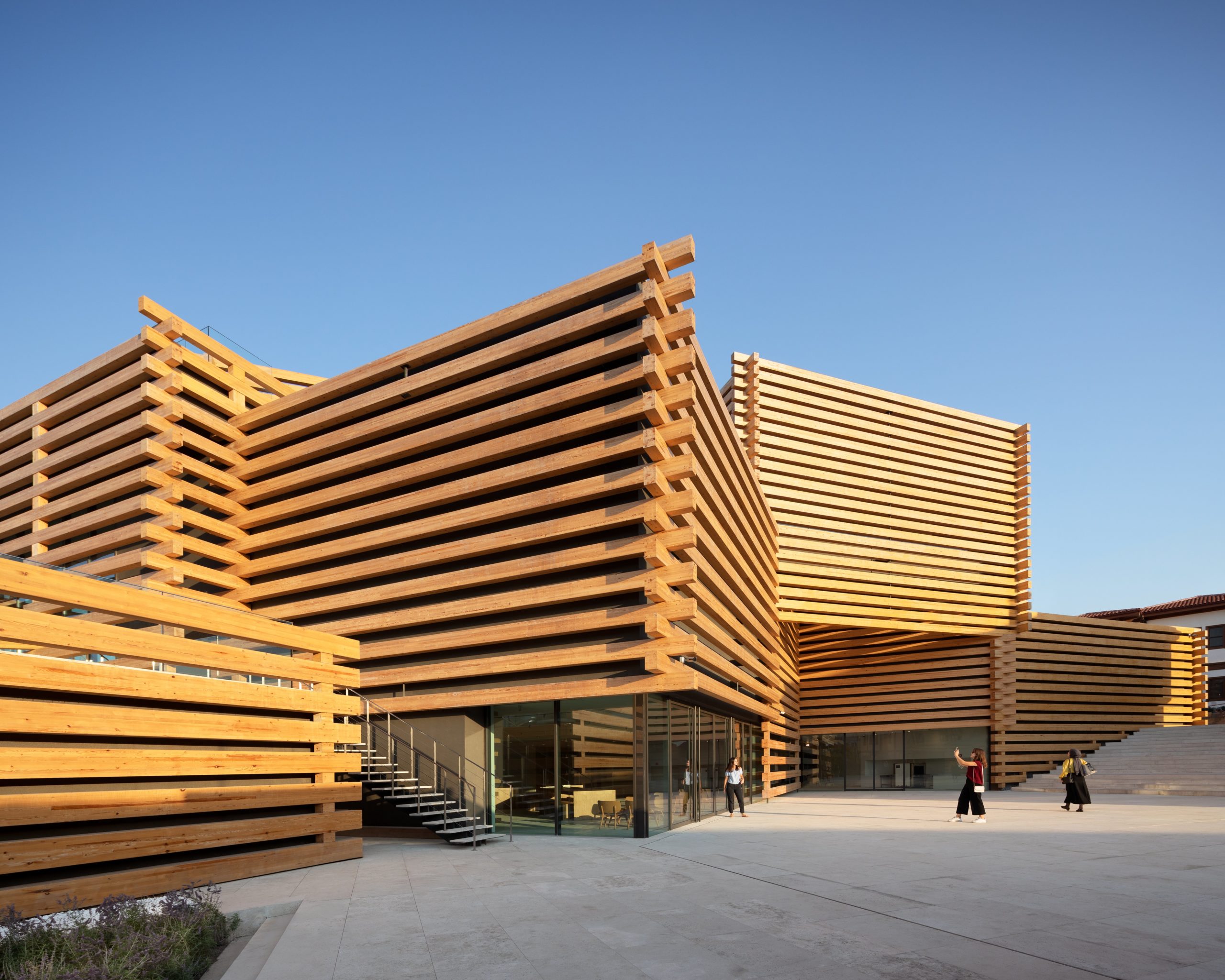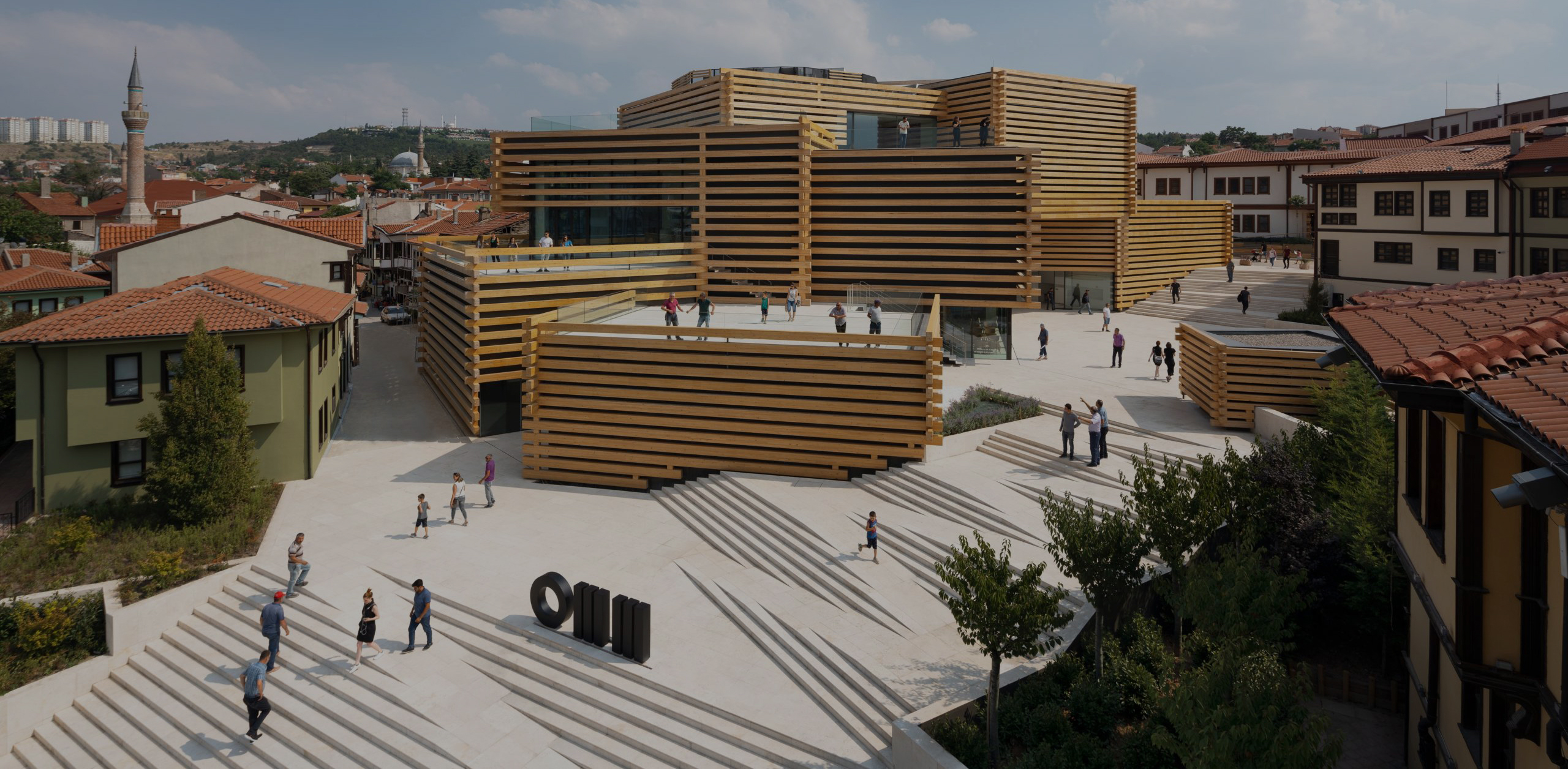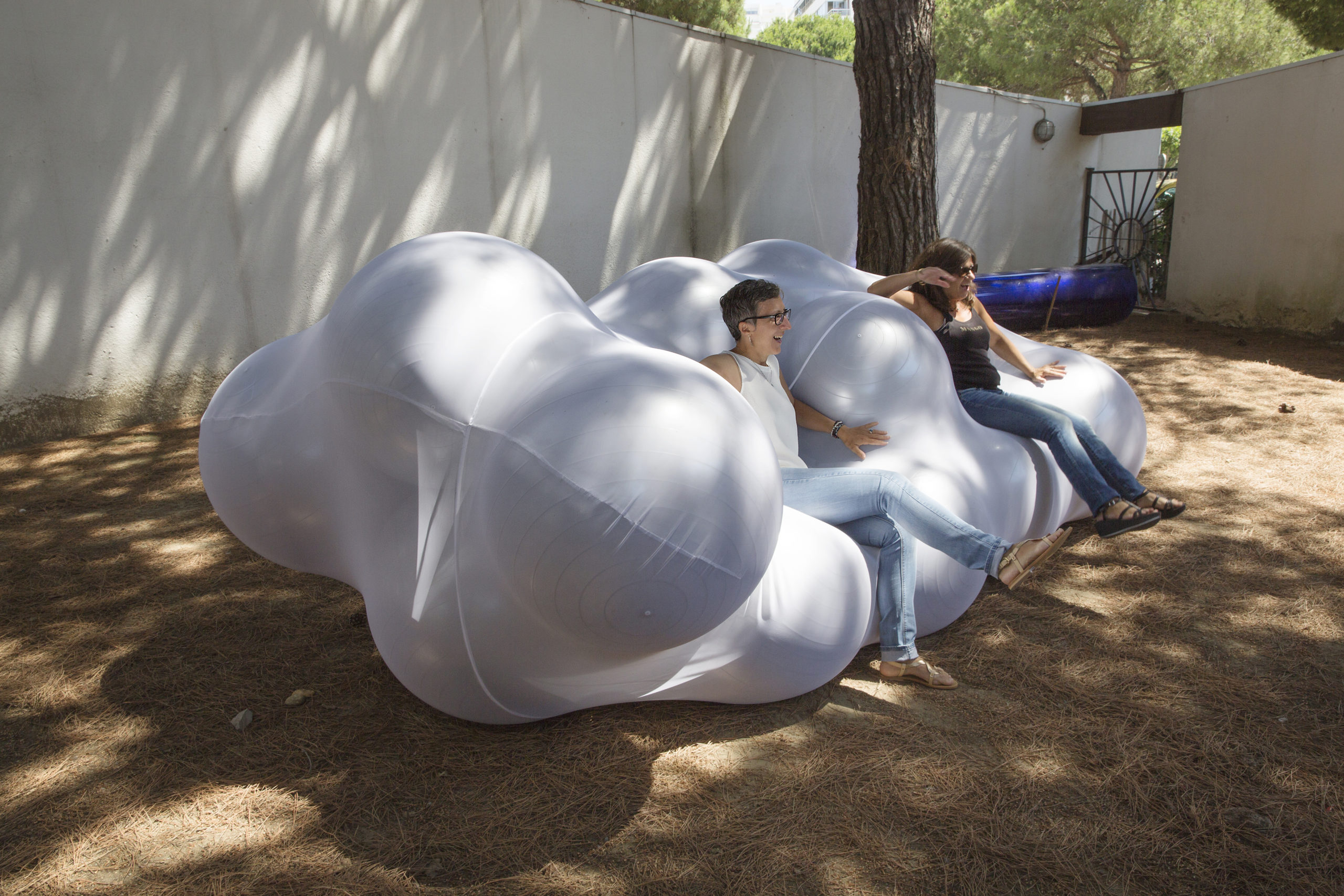Architects: Want to have your project featured? Showcase your work by uploading projects to Architizer and sign up for our inspirational newsletters.
Few architects balance the science and art of construction like Kengo Kuma. As an architect, professor and prolific writer, Kuma has redefined and expanded the possibilities of materiality in architecture. This approach holds true in the Odunpazari Modern Art Museum (OMM) designed by Kengo Kuma and Associates and located in Eskişehir, Turkey. Combining interlocked timber beams with cubic volumes, the design pays homage to the district’s historic namesake, which means “wood market” in Turkish.

 Kengo Kuma and Associates describe the practice’s driving philosophy as “amalgamating nature and architecture in a manner that creates a strong bond between the ‘building’ and its ‘location.'”
Kengo Kuma and Associates describe the practice’s driving philosophy as “amalgamating nature and architecture in a manner that creates a strong bond between the ‘building’ and its ‘location.'”
In the design of the OMM building, the team reinterprets the historic fabric of the Odunpazarı district from a contemporary perspective. Drawing from the local architecture of Odunpazarı, Ottoman dome architecture, and traditional Japanese architecture, OMM’s design is highlighted by four major components: geometry, light, stacking, and timber. In terms of materials, Kuma took a similar approach, opting for natural materials such as timber, stone, and paper for similar reasons.

 The site is at the threshold of newly developed urban area and small-scale town scape of traditional Ottoman wooden houses. These wooden houses, with cantilevered volumes at the upper level, were built along the narrow, meandering streets, making the walk-through experience both unique and unexpected.
The site is at the threshold of newly developed urban area and small-scale town scape of traditional Ottoman wooden houses. These wooden houses, with cantilevered volumes at the upper level, were built along the narrow, meandering streets, making the walk-through experience both unique and unexpected.
The stacked and interlocked boxes are designed in various sizes to create diverse scales of exhibition space inside. Boxes at the ground level offers opportunities for large scale art works and installation. The boxes get smaller at upper levels to exhibit smaller, intimate scale art works.
 As the team explains, the Odunpazari Modern Art Museum exhibits the owner’s collection of Turkish modern art. The museum was planned in the city of Eskisehir where the owner was born and raised. This university town is known for its young population that is a large majority, and the city has a lively and active atmosphere.
As the team explains, the Odunpazari Modern Art Museum exhibits the owner’s collection of Turkish modern art. The museum was planned in the city of Eskisehir where the owner was born and raised. This university town is known for its young population that is a large majority, and the city has a lively and active atmosphere.
The architectural stacking and the timber construction system defines the spatial experience of the museum, which combines laminated timber pine, glass and limestone. The exterior envelop of the museum features timber as a way to signify the history and memory of Odunpazari that used to function as a market in trading wood.

 The designers worked with a range of consultants to bring the museum to life. These included SIGMA for structural, as well as Ateknik Structural Design as the facade engineer and Polimeks Holdings as the general contractor.
The designers worked with a range of consultants to bring the museum to life. These included SIGMA for structural, as well as Ateknik Structural Design as the facade engineer and Polimeks Holdings as the general contractor.
The design strategy was to make the volume in aggregation; stacking small boxes to create the urban scale architecture. “Stacked boxes at the street level are read in the scale of surrounding houses and it grows taller towards the center of the museum to stands in the urban scape that announces itself as new cultural landmark of the area.”

 The solid timber material provides both facade and structural material. The larger exterior of the site features a tiered, cascading staircase that runs diagonally across OMM, providing access to all levels. Inside, the central atrium is composed with timber blocks and connects each level to let the natural light through skylight above.
The solid timber material provides both facade and structural material. The larger exterior of the site features a tiered, cascading staircase that runs diagonally across OMM, providing access to all levels. Inside, the central atrium is composed with timber blocks and connects each level to let the natural light through skylight above.
The structural system uses engineered mass timber beams in a stacked effect to create a simple layered system. The 11 inch section beams use two different joinery techniques. Some of the beams are laid flat on top of each other, leaving a full 11 inch gap between beams. Other beams are notched 3 inches into their neighboring perpendicular beams, leaving only a 6 inch gap.

 TSteel rods are inserted into the connections for stability and have been capped with wooden plugs. The interior spaces are mostly defined by white walls and oak timber floorboards. A layer of cement fiber sheet, along with a vapor barrier and both mineral and rigid insulation sit between the timber cladding and the internal structure.
TSteel rods are inserted into the connections for stability and have been capped with wooden plugs. The interior spaces are mostly defined by white walls and oak timber floorboards. A layer of cement fiber sheet, along with a vapor barrier and both mineral and rigid insulation sit between the timber cladding and the internal structure.
“The idea for OMM was to use architecture to create a link between people and art,” said Kengo Kuma and project leader Yuki Ikeguchi in a statement. “We were deeply inspired by the history, culture, people, and streetscape of Odunpazarı, and we wanted the building to resonate on many levels. we hope that the museum will breathe new life into Eskişehir and become a central and inviting meeting point for the city.”

 Totaling more than 48,000 square feet, OMM is home to the collection of Turkish architect Erol Tabanca. The building works in tandem with other structures on site to create a museum square that has served as a meeting point for locals and visitors alike since its opening in September 2019. Now the museums stands as an iconic landmark and cultural gateway to the Anatolia region of Turkey.
Totaling more than 48,000 square feet, OMM is home to the collection of Turkish architect Erol Tabanca. The building works in tandem with other structures on site to create a museum square that has served as a meeting point for locals and visitors alike since its opening in September 2019. Now the museums stands as an iconic landmark and cultural gateway to the Anatolia region of Turkey.
All images courtesy NAARO. All drawings courtesy Kengo Kuma and Associates.
Architects: Want to have your project featured? Showcase your work by uploading projects to Architizer and sign up for our inspirational newsletters.




